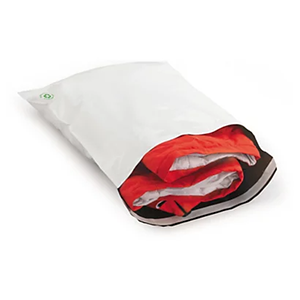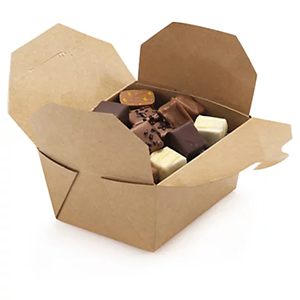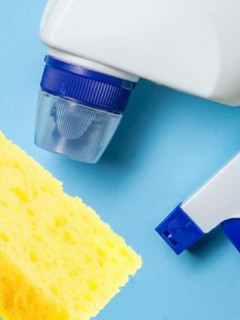We are in the middle of the summer heat. Some people tolerate it better, others less well. The same is true when shipping or transporting heat-sensitive products. Especially when shipping pharmaceutical products, but of course also certain foodstuffs, it is even obligatory to maintain a certain temperature level. Foodstuffs, vaccines and certain medicines belong in insulated containers. But how do I protect my heat-sensitive products during shipping?
Temperature-sensitive products
In order to ship temperature-sensitive products, the following basic guidelines for optimal packaging apply:
Outside temperature
If possible, pack at the temperature you want your packaged goods to be. If the packaging is significantly warmer than the packaged goods, the cooling time of the cooling element will be reduced. This is because the battery uses valuable (cooling) energy to cool down its surroundings.
Size
Use the smallest possible outer packaging. The less air is “co-packed” and cooled, the sooner the cooling battery can fulfil its actual task: Keeping the packaged goods cool.
Cooling battery
Choose the right cooling battery. Depending on the cooling liquid, the eutectic point varies – and so does the cooling capacity!
What is the eutectic point?
What sounds like a term from classical Greek drama helps in choosing the right cold pack. Every cold pack is filled with a liquid that freezes solid at a certain temperature. The gradual change of the aggregate state from liquid to solid or vice versa is called phase change. Depending on the liquid with which the ice pack is filled, this phase change takes place at a different temperature. Water, for example, freezes at 0 degrees Celsius, the eutectic point of water is therefore at zero degrees, the phase change begins.
And what happens during the phase change?
In order to change its state of aggregation, the battery needs energy. When changing from solid to liquid, the battery extracts this energy from its environment in the form of heat: the packaged goods are cooled! And this does not happen linearly, but in three different phases: Temperature increase, temperature constancy, temperature increase again. For a better understanding, here is a graphic and its description (www.logismarket.at):
1.
The phase change material inside the cold pack is in a solid state(frozen). The battery temperature gradually rises as warmer ambient temperatures affect it.
2.
The temperature of the cold pack continues to rise until the temperature of the eutectic point is reached. Now the cold pack absorbs heat without changing the cold pack temperature. In this phase, the cold pack constantly releases a certain temperature to the environment and thus to the product to be transported. The aim of the insulation system is for this phase change to last as long as possible. In this phase, the inside of the battery is in a solid-liquid state.
3.
The phase change is finished and the substance inside the cold pack is now liquid. The cold pack temperature gradually rises and takes on the ambient temperature.
Insulating packaging
Insulating packaging helps to delay the rise in temperature as long as possible. They reflect the cold inside the package (metallic surfaces are ideal here) and insulate against heat influences from outside.
Insulation box – clever design for more temperature stability in the box
The Thermobox, for example, takes advantage of the excellent insulation properties of extruded polystyrene (also used in construction!). Extruded polystyrene (XPS) is a closed-cell, hard insulation material made of polystyrene (plastic). the polystyrene granulate is foamed in an extruder with the addition of a blowing agent. Extrusion (this is a process technique in which components are melted under pressure and shaped) creates a large number of small closed cells, which provide the good insulation and high insensitivity to moisture.
Insulating boxes made of polystyrene
As a rule, insulated boxes made of polystyrene thus fulfil two requirements at once: reliable cooling performance for the entire duration of the shipment and, at the same time, low postage costs due to the low weight. But how does such a “passive cooler” actually work? Unlike an electrically operated cooler, which continuously draws (heat) energy, I have to provide my parcel with the – time-limited! – cooling power directly in the parcel. The combination of the right cooling battery and insulating outer packaging can keep the temperature constantly cool for up to four days if I follow a few rules. This variant is therefore particularly recommended for shipments that take longer. The separating plates also protect sensitive products from direct contact with the cold packs.
The space-saving alternatives
The Thermobox Isostar not only looks great, it can also be used as a transport box. The advantage: it is delivered flat, which means less storage space is needed compared to the Thermobox Cool. The special packaging has a very thin wall thickness and yet still has a good insulating effect. When equipped with cooling packs, the temperature remains in the range of 2°C to 8°C for up to 24 hours, depending on the design, as the table shows:
Insulated boxes for shipping heat-sensitive food
The Isopro ins ulating box is a shipping packaging that is particularly suitable for foodstuffs. The extruded foam is 3 mm thick and can therefore perform an insulating function comparable to that of 24 mm thick extruded polystyrene. It ensures a constant transport temperature of 0°C to 4 °C depending on the number of cold packs used.
Avoid direct contact with the cold pack: Thermal bag
Sensitive products should be protected with thermal bags or thermal bubble wrap; direct contact with the cold packs should be avoided to prevent freezing. At the same time, they also provide protection against temperature fluctuations.
Temperature indicators on the packaging make it possible to monitor the temperature during transport and storage and show whether the limit value was exceeded or not during transport. Damage is significantly reduced in this way.
For the shipment or delivery of individual products or medicines, thermal bags with a pressure seal are a recommendable alternative. An integrated waterproof inner pocket for the cold pack protects the products from freezing.
So the summer can come 🙂

















